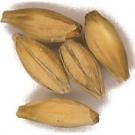Malt: Part I – Base Malts vs Speciality Malts
I have been working on getting my malt post together for what seems like an eternity. I have been finding blogging a difficult task with my work and family commitments. I managed to get out of work at a reasonable hour this evening and decided I would work on getting my first Malt post out the door.
Over this series we are going to focus on the characteristics of malt, how it works, how to calculate the OG of the wort and then switch to looking at specialty malts and how they add flavour, colour, head, and improve mouthfeel. But first I thought we should answer a very basic question. What is the base malt, what is specialty malt and what is the difference between them?
First up what do they have in common – they are both barley. Base malts impart colour, some flavour and supply the fermentable sugars. Speciality malts provide little to none of the sugars but have a big impact to the colour and flavour. First lets remind ourselves of the malting process first covered in my getting started post. Malt is the product of soaking grains in water until they begin to germinate. The grains are then heated to halt the germination process. This 2-stage “malting” process causes the grains to produce essential enzymes required to modify the grain starch into sugars and enable the yeast to do its job.
Base Malts
Base malts make up the bulk of the a batch and are typically derived from one of 2 types of barley, either 2-Row or 6-Row. Base malts are created by drying the barley at a sufficiently low temperature to preserve enzymes (alpha and beta amylase) which convert starch into sugar (the same enzymes in saliva that make peanut butter and sour cream separate). It is these enzymes that are critical to the brewing process. Without them the grain starch would not get converted to fermentable sugars. The sugars can be extracted from the barley’s own starches simply by soaking the grain in water at a controlled temperature in a process called mashing.
The most common form of base malt is Pale Malt, typically lite in colour and neutral malt flavour. Another type of malt with high enzyme levels is Mild Malt, kilned at slightly higher temperatures to produce a nutty flavour. Other base malts include Vienna, Pilsener and Munich.
Specialty Malts
Specialty malts have no enzymes and therefor little to no diastatic power (ability to convert starch into sugars). These types of malt make up a smaller quantity of the grist but have a significant impact on the colour and flavour of an ale. Most specialty malts are pale malts that have been kilned at higher temperatures and in doing so impart darker colours and roasted flavours. The higher kilning temperatures do not preserve the enzymes. Typical specialty malts include Chocolate Malt, Black Malt and Brown Malt.
A special type of malt used a great deal in British Ales is Crystal malt. Crystal malts are high-nitrogen malts which are soaked in water and roasted before kilning. They produce overly sweet toffee-like flavours and the sugars are sufficiently converted that they can be steeped without mashing to extract their flavor. Crystal malts are available in a range of colours, with darker-coloured malts kilned at higher temperatures, producing stronger, more caramel-like overtones. Some of the sugars in crystal malts caramelize during kilning and become unfermentable adding a sweetness to a beer.
So far the recipes we have covered have all been extract brews where the base malts are replaced with liquid or dried malt extracts. The sugars have already been extracted and all we have to do is steep the specialty malts to extract flavour and colour. But here is the twist and a major difference between extract and all-grain brewing. With the exception of Crystal malts, which have no fermentable sugars remaining, other specialty malts such as the Chocolate, Brown and Dark malts may have no enzymes present BUT THEY ARE STILL LOADED WITH STARCHES. So when an all-grain brewer adds his specialty grains to his grist there are enough enzymes present in the base malt to convert the specialty grains starches also. I am very ready to retry some of my favorite recipes as all-grain to see the impact the mashing process has on the specialty grains.
There is a process called mini-mashing which adds a smaller, more manageable, amount of base malt to the specialty malt to convert the starches and then adding malt extract to the boil to get the OG gravity to where it needs to be. In my humble opinion if I am going to go all-grain I am going all in.
Next up we will review how to use the diastatic level of the malt bill to predict the OG of the wort.

Pingback: British Brewer » Blog Archive » Malt: Part II – Measuring Diastatic Power()